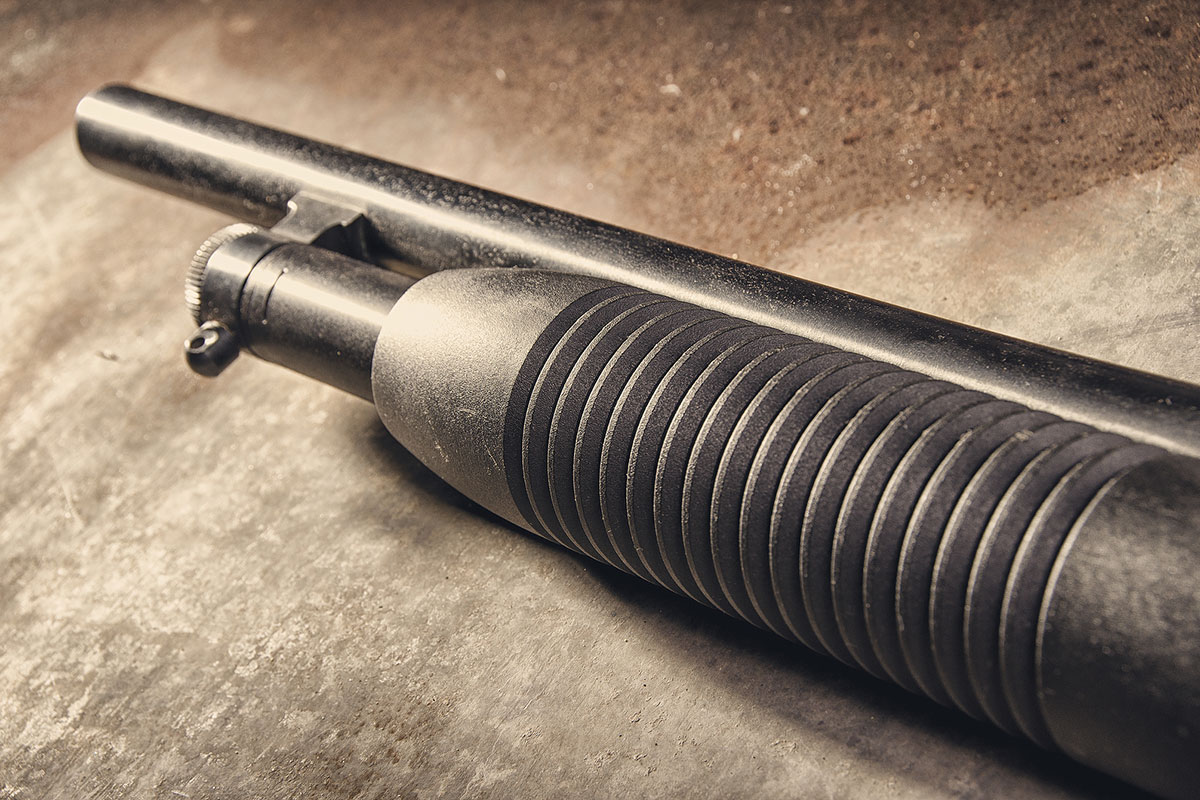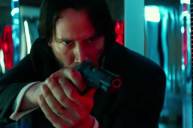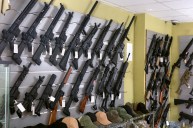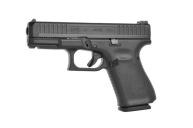Hollywood gets guns wrong in movies and TV shows the same way, over and over again.
There are a lot of guns in movies and TV shows, and there always have been, pretty much since the advent of moving pictures.
And ever since, filmmakers have been getting things wrong about how guns are used.
These are by no means all the movie mistakes committed regularly by Hollywood, but they are some of the ones that bug me the most:
The Never Ending Magazine
This is a trope that will likely never end. The rule of thumb in Hollywood has usually been that revolvers hold six rounds. Movies are pretty good at holding close to that, even though plenty of revolvers hold seven or eight rounds.
But with magazine-fed pistols, the sky's the limit in terms of ammo counts.
Often characters are never shown reloading their firearm, or if they are, that one-reload-per-gunfight is conveniently timed so it occurs during a break right in the middle of the action, and it's done dramatically, of course.
This mistake ranges across handguns, rifles, and shotguns—even double barrel shotguns, which will sometimes be fired four or six times before the action is opened for fresh shells.
Characters Carry No Mags Whatsoever

Even if a character reloads as diligently as they should, which is rare, you hardly ever see them carrying spare magazines. In fact, you're more likely to find a gun-wielding character in some of the more unrealistic action movies, carrying multiple firearms instead of spare magazines.
Even war movies are often guilty of this error, with soldiers having only one ammo pouch, or a bunch of ammo pouches that are clearly empty. That's because most of the time, filmmakers simply don't think a bunch of magazines strapped to somebody looks cool, and actors don't want to be hauling all that gear around for 16 hour days in costume.
The Porcelain Gun
This is a very specific gaffe from a single movie, because it's a very famous mistake that misinformed an entire generation about a certain type of gun, so we're calling it out.
In "Die Hard 2" (1990), John McClane (Bruce Willis) takes on a couple terrorists in the luggage are of Dulles International Airport. Later, in the office of the Captain of the airport police, when the surly officer suggest the men might have been stealing luggage, McClane says:
"Luggage? That punk pulled a Glock 7 on me. You know what that is? It's a porcelain gun made in Germany. It doesn't show up on your airport X-ray machines here and it costs more than what you make in a month!"
First and most obviously, there is no Glock 7. The bad guys in this movie were carrying Glock 17s, but the pistol was still so new stateside, many people were only vaguely aware of Glocks by name, if at all.
Second, they obviously aren't made of porcelain, and every part but the polymer frame on a G17 is metal, so it would absolutely set off a metal detector.
I cannot attest to the salary of Dennis Franz in this particular movie, but I doubt a G17 would have cost a month's salary, even in 1990. Well, maybe...
Impossible Accuracy with Handguns
Whether it be against hordes of zombie or armed bad guys in a shootout on the street, people are often way too accurate with handguns in movies.
They are often able to make headshots at distances of dozens of yards. Expectedly, the aim is better for a main character than supporting characters, who usually have the natural accuracy of Star Wars stormtroopers.
The most egregious offender is a TV show rather than a movie: "The Walking Dead," likely because headshots are the only way to take out walkers on the show, and in many other zombie shows and movies.
Trigger Discipline
It's a gaffe that will cause any shooter to visibly cringe.
Though Hollywood has been getting better about this particular movie mistake, especially in flicks that are intended to be more tactically minded, trigger discipline has always been terrible in movies. Actors frequently run through scenes holding firearms, fingers firmly planted on triggers and muzzles sweeping people constantly.
You'll see this sin committed by everyone from James Bond to Rambo, even on movie posters. Audiences have to forgive the endless flagging, as the camera angle dictates the actors' positioning and movements, but there's no excuse for fingers on triggers, even if it is somehow more cinematic.
Shotguns Blasting People Across Rooms

For some reason, likely due to their large bores, shotguns in Hollywood were established long ago to have the magical ability to blow people clear across rooms, out windows, or into the very stratosphere.
A single shotgun blast is often enough to take a grown man clean off his feet and crashing into some bit of scenery.
While a close-range shotgun blast will certainly do a lot of damage to the human body and cause it to fall, it physically cannot throw that body through the air. Neither will rifles or magnum handguns. They create bullet holes in people, sometimes with large exit wounds and a lot of blood, but they don't launch people by the yard.
Based on the fact that the person usually has to be yanked out of frame by more than one crew member, this should be pretty obvious.
Duration of Full Auto Fire
This is a sin that many 80s movies are very guilty of. Here's looking at you, Arnie in "Commando."
Along with absurdly prolonged firefights and never ending magazines, guns seem to fire in full auto for remarkable amounts of time, especially considering characters are rarely seen hauling extra ammo around.
A favorite trick is an ammo belt on a machine gun magically getting longer between shots, prolonging the duration of fire. In real life, machine guns are typically fired in bursts, and sustained fire goes through ammunition quickly, not to mention gun barrels.
Using a Car for Cover (or Not Taking Cover at All)
Invariably, any time a gunfight breaks out in any kind of urban, or even suburban setting, good guys and bad guys alike immediately scramble to take cover behind...cars. Because, you know, they act like bulletproof shields.
In real life, the only part of a car that serves as cover and not merely concealment is the engine block. The rest of a vehicle can be pierced through and through, even by handgun rounds.
After all, it's mostly plastic and thin sections of aluminum attached to a steel frame. If you've ever had the fortune to shoot at an old car down range, you'll immediately understand how silly it is to use one for reliable cover.
But characters diving behind a car in a hail of bullets is almost preferable to the ones who simply wade out into the middle of gunfire and never seem to get hit, while skillfully picking off bad guys at their own steady pace. Watch any Steven Seagal movie, ever, and you'll see what I mean.
Guns 'Going Off' When Dropped
I love "True Lies," but that scene when Jamie Lee Curtis drops a MAC-10 submachine gun down some stairs, and the gun fires a burst every time it hits a step, spinning the whole way, miraculously taking out a group of bad guys.
We forgive this instance, because it was played for comedy, but guns go off far too often in movies when they're dropped, even modern revolvers.
In real life and with modern safety mechanisms, it's really tough to get a gun to "go off" by merely dropping it, unless the firearm has some kind of defect. Unfortunately, some movies would have you believe guns are as temperamental as nitro glycerin.
Machine Guns Everywhere

If you go by what you see in the movies, street gangs always seem to have massive caches of fully automatic machine guns and submachine guns, along with extended magazines and everything else, at the ready, all the time. Pretty much all bad guys have access to machine guns whenever they need them.
In reality, full auto firearms are rare on the street, and they can be remarkably expensive. Even legal full auto guns can go for $20,000 - $40,000 or more depending on the model.
Federal laws require that all full auto guns be registered with the federal government, which includes a detailed background check and the purchase of a $200 tax stamp. And thanks to legislation passed in the 1980s, the manufacture and importation of full auto guns has been extremely restricted.
In 1995, there were about 240,000 automatic weapons registered with the ATF, and that includes antique military firearms. That's a paltry number considering there are hundreds of millions of firearms in private ownership in the United States.
In real life, criminals and gangs are more likely to use handguns when committing crimes.
NEXT: THE 10 BEST RIFLES IN .308 WINCHESTER YOU'LL FIND ON THE SHELVES
WATCH




